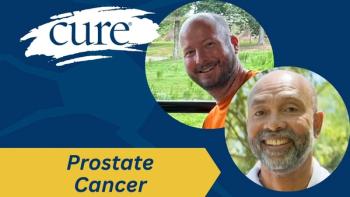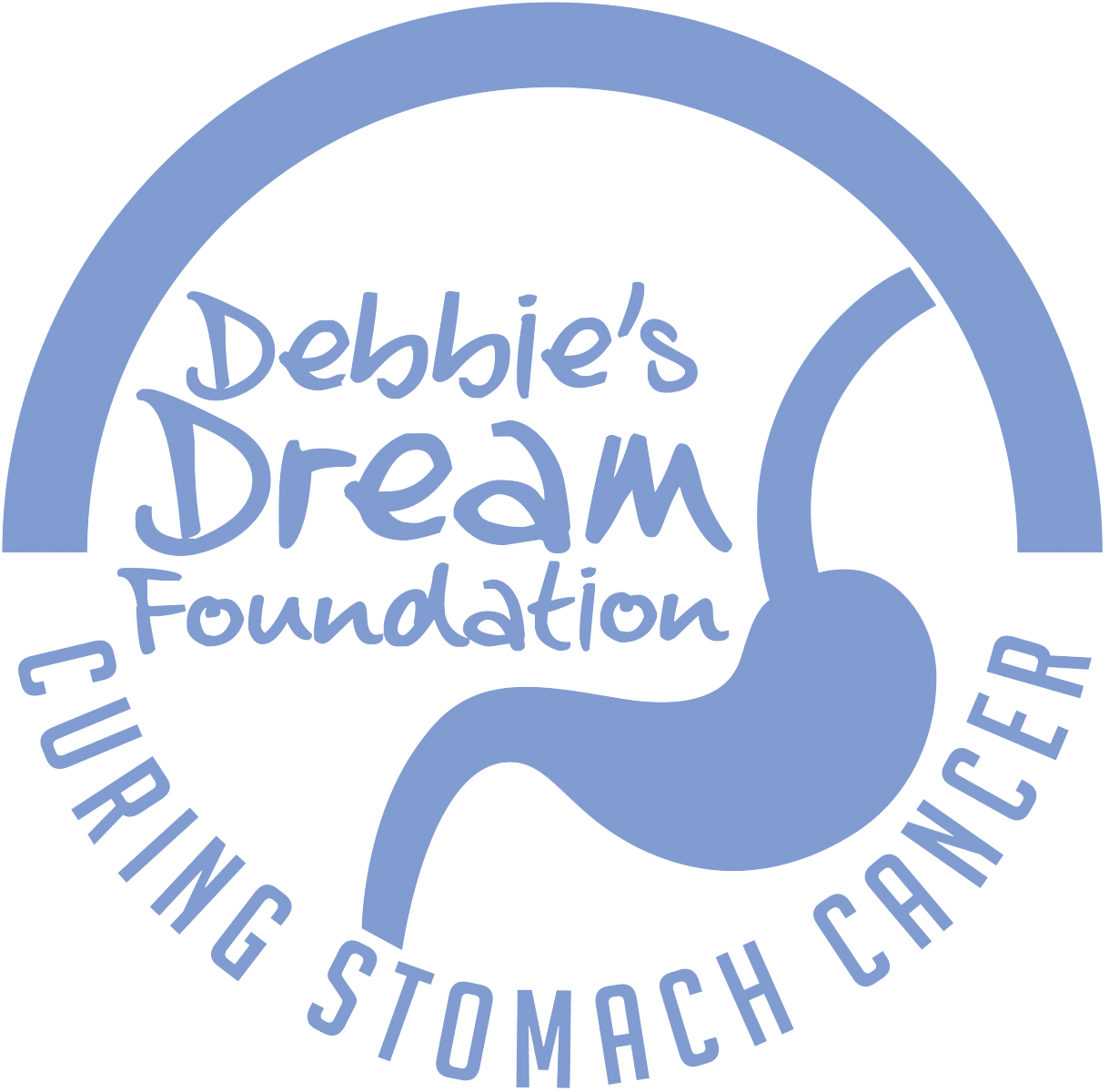
- CURE® Gastrointestinal Cancers 2021 Special Issue
Hard to Stomach: The Rise of Gastrointestinal Cancers in Patients Under 50

As the incidence of GI cancer creeps up among younger patients, so does the question of why.
In April of 2019, Colt Blunt arrived to a routine physical prepared with notes describing some gastrointestinal symptoms he had been experiencing, including heartburn, bloating, abdominal pain and general discomfort.
“My symptoms weren’t that bad, but they were new,” says Blunt, a forensic psychologist in Minnesota. “Luckily, I have a fantastic primary care doctor, so he took me seriously. He said it was probably just acid reflux, put me on some proton pump inhibitors and said if I wasn’t perfectly back to normal after 10 days, he would send me for an endoscopy.”
Although the medication helped, it didn’t eradicate Blunt’s symptoms, so the following week, he went in for an endoscopy. At 37 years old, Blunt was young and otherwise healthy. However, because his family has a history of cancer, when the endoscopy visualized an ulcerated area of his cardia, he was concerned about the risk.
“I asked my (gastrointestinal) doctor ‘What are the chances that this is cancer?’ and he said, ‘One in a million,’ “ Blunt says. “When I asked him why, he said that he had just diagnosed a 37-year-old with stomach cancer the week before, and he sure as hell wasn’t going to diagnose another one a week later.”
However, on June 20, 2019, that’s exactly what happened. After his endoscopy, Blunt received a diagnosis of stage 3 gastric adenocarcinoma of the upper cardia (just below the esophagus). Although gastric cancer at Blunt’s age is rare, his experience is representative of a growing trend — an increasing number of patients under the age of 50 are receiving a diagnosis of gastrointestinal cancer.
An Unsettling Trend
“I used to always be younger than all of my patients, and now I’m seeing patients younger than myself,” says Dr. Travis Grotz, a surgical oncologist in the Division of Hepatobiliary and Pancreatic Surgery at Mayo Clinic in Rochester, Minnesota. “It is crushing when you see a young mother or father dealing with something so serious.”
“Gastrointestinal (GI) cancer” is a term used for the group of cancers that affect the gastrointestinal tract and other organs contained within the digestive system, including the colon, rectum, liver, stomach, pancreas and esophagus. As with many cancers, GI cancer mostly affects older popul- tions. For example, the average age of people who receive a stomach cancer diagnosis is 68; for colon cancer, the average age at diagnosis is 68 for men and 72 for women. Why, then, is incidence for GI cancers rising in younger patients?
Rebecca Siegel, senior scientific director at the American Cancer Society, first set out to answer that question, in regards to colorectal cancer, in 2007.
“I was analyzing data from a colorectal cancer report, and for some reason, I decided to analyze trends by age,” Siegel says. “In the oldest age groups, incidence and mortality (are) declining rapidly and (have been declining) for a long time now. ... But when I looked at rates in adults under 50, I noticed that incidence was actually increasing — and by a statistically significant amount.”
What’s more, Siegel clustered that data from adults under 50 into several smaller age groups — 20 to 29, 30 to 39 and 40 to 49 — and found that incidence rates were increasing across all of them. Similar studies are taking place across other GI cancers, too, with very similar findings.
One study was co-authored by Dr. Don Codipilly, a gastroenterology fellow at Mayo Clinic, in January. When analyzing data from patients with esophageal adenocarcinoma between 1975 and 2015, Codipilly and colleagues found that not only has esophageal adenocarcinoma incidence increased in patients under age 50, with an annual change of 2.9%, and presented at more advanced stages than older patients, but younger patients with esophageal adenocarcinoma also experienced poorer five- year disease-free survival (the length of time after primary treatment for a cancer ends that the patient survives without any signs or symptoms of that cancer) compared with older patients.
“Obviously, this is an unsettling trend because with cancer, we would hope that incidence would be going down,” Codipilly says.
Because GI cancers are more prevalent in older populations, limited data are available on younger patients, making it difficult to ascertain why incidence is rising among people under the age of 50.
“There are known risk factors for colorectal cancer, such as excess body weight and smoking, but all of those studies are based on people who are much older,” Siegel says. “All of this is a really new area, and (increasing incidence in younger populations) doesn’t seem to be fully explained by those risk factors that we currently know of.”
For example, Siegel says that they are not seeing the same increase among racial and ethnic groups; the largest increase is in non-Hispanic White patients, which suggests that it isn’t just excess body weight contributing to the rise, because obesity has been increasing in all of these groups. The trends are also “remarkably similar” between men and women, which suggests that it is not hormonal.
However, researchers are learning more by the day, such as the role gut bacteria may play in the development of certain cancers.
“I have been very impressed with the increasing literature suggesting that the bacteria in our GI tract may play important roles in the development of cancer,” explains Grotz. “This may be particularly true in young patients. As a result, this has widespread implications of how we manage antibiotics.”
Being Pushed to the Side
Even with an increasing number of younger patients receiving a diagnosis of GI cancers at more advanced stages, obstacles to getting that diagnosis still remains.
“If a young person who is 20 or 30 (years old) goes to their doctor with a GI complaint, cancer is not coming to their or the physician’s mind,” notes Codipilly.
This is exactly what happened when Matt Budgell first started experiencing chronic stomach pain in February 2019.
“I wasn’t getting enough hours at work to get health insurance through my employer, so I just started getting used to dealing with the discomfort. Cancer was the furthest thing from my mind,” says Budgell, who was 26 years old at the onset of his symptoms. “When I finally got in to see a gastric specialist, they said, ‘You’re young. You probably just have an abnormal amount of acid or an ulcer in your stomach. Take some Prilosec OTC and you’ll be good to go.’ I tried that, and it didn’t do very much at all.”
After having his endoscopy appointment continually rescheduled — once, Budgell says, because they gave his appointment to somebody else who “needed to be seen right away” — he was finally given answers on Jan. 10, 2020, almost a year after his symptoms began. At age 27, he was told he had stage 3/4 gastric cancer.
“There is no doubt in my mind that my age played a role in why it was so hard for me to get an appointment,” Budgell, who initially received treatment in his home state of Hawaii and later California, says. “They push young people off to the side. They expect you to be fine. And then all this time passes, and finally, you find out that you’re not going to be fine at all.”
Siegel highlights that later diagnoses like that of Budgell play a critical role in why cancers in younger patients are more advanced — so, as with any cancer, early detection is important. However, because younger patients tend to be healthier than those over 50 years of age and are less likely to have comorbidities, they can also handle more aggressive treatments.
“A lot of our current treatment regimens (for GI cancer) are targeted at an older population, but younger people can probably withstand more aggressive treatment or major surgeries,” Codipilly says. “That could lead to more complications, but it could also lead to greater rates of cure.”
Immediately after getting his diagnosis, Budgell had an open partial gastrectomy to remove the tumor, 60% of his stomach and a piece of his pancreas, followed by four months of chemotherapy. Blunt, too, underwent an aggressive treatment comprised of an open full gastrectomy (a complete removal of the stomach) and eight rounds of chemotherapy.
“I didn’t want (a doctor) who was going to treat me like I was medically fragile,” Blunt says. “I wanted an oncologist and a surgeon who were willing to look at me as an individual, not as a group statistic.”
For both of them, despite the advanced stage of their cancers, the aggressive approach paid off. Budgell’s most recent follow-up PET scan and endoscopy looked clear, and Blunt has been NED, or no evidence of disease, on all of his scans since August 2019. Now the biggest hurdle involves finding the best way forward — changing their diets and dealing with psychological after effects.
“My diet has been completely overhauled. I used to eat whatever I wanted and never gained any weight, so it felt like it didn’t matter, but after this experience, I eat really clean,” explains Budgell. “For me, the recovery from the surgery was not as bad as the psychological damage and recovery that had to take place.”
“It took me almost a full year to figure out how to eat enough to get all my calories in,” notes Blunt. “I can’t eat dairy and sugar like I used to; meals, in general, have to be smaller than they used to be ... but I’m back in the gym, back to running, back to working full time, and I’m feeling pretty healthy. I’m still learning things about my new normal, but anybody looking at my life from the outside who doesn’t know what I’ve gone through probably thinks I’m living a pretty normal life.”
However, although young individuals may be better able to withstand treatment, as well as bounce back quicker after treatment, their age can also come with some disadvantages.
“Young folks are not usually as financially stable as older patients,” Siegel says. “They often have young families to care for and are in the beginning or middle of their career, and a lot of drugs they are receiving are very expensive with high out-of-pocket costs.”
“Being a young adult and not dealing with cancer, it is already hard enough to get by and make ends meet,” Budgell says. “But when you’re diagnosed, you have to think about treatment and taking time off because you don’t feel well, (but) your expenses don’t just go away even though you’re sidelined by cancer.”
Keeping Yourself Safe
Experiences like those shared by Blunt and Budgell underscore the unique challenges young patients with GI cancer face, as well as the importance of both patients and doctors taking all symptoms seriously, despite the age of the patient.
To get ahead of a potentially serious diagnosis, Grotz suggests, patients should have health insurance whenever possible and bring up every symptom to their doctor, no matter how benign that symptom may seem. If patients feel that their doctors are discounting their concerns, they should advocate for themselves and find a new doctor, if necessary. They can even empower themselves with knowledge and point out the statistics of rising cases of GI cancers, as well as others, among young individuals.
“All of us should be going to the doctor at least once a year,” Blunt says. “Listen to your body, and if something feels off, talk to somebody about it. If you have a doctor that brushes you off and says it’s nothing, then that’s a bad doctor — get a new one. If I had a different doctor who didn’t take me seriously, I would probably be dead. It would have been caught too late.”
Siegel also stresses the importance of knowing your family history and relaying that information to your doctor.
“There are a lot of places to fall through the cracks, but knowing your family history is a low- hanging fruit,” she says. “We could make a huge impact if everybody knew their family history and was screened according to guidelines.” Although there are no strict screening guide- lines for many GI cancers, Siegel’s research contributed to the American Cancer Society lowering its recommended age to start screening for colorectal cancer — from age 50 to 45. “Reducing the age recommendations is huge,” Siegel says. “However, while colonoscopy is the most common test, for even younger people ... there are home tests that are very effective. The best test for you is the test that you do.”
Finding a Community Through Cancer
A cancer diagnosis can be isolating, no matter your age, stage or cancer type. And because gastrointestinal (GI) cancer typically affects older populations, receiving a diagnosis as a young adult comes with a unique set of challenges.
“A lot of times, folks with cancer can feel like they’re doing it on their own,” explains Dr. Don Codipilly. “But there are tons of people out there who have gone through similar issues.”
For that reason, patients should never underestimate the importance of finding a community of other patients with cancer and survivors who understand what they’re going through. Codipilly suggests starting by asking a doctor to recommend local support groups; if there aren’t any available locally, many national groups are able to connect patients from across the world over the internet.
Both Colt Blunt and Matt Budgell, two young adults with GI cancer, have been involved with Debbie’s Dream Foundation since receiving their diagnoses. The nonprofit organization is dedicated to raising awareness about stomach cancer, funding research and providing support to patients, families and caregivers.
“I became involved with Debbie’s Dream Foundation after searching for cancer survivor stories on Google shortly after my diagnosis,” Blunt says. “Through Debbie’s Dream Foundation, I’ve met other survivors who I’ve been in frequent contact with since.”
Since finding the foundation, Blunt has also started advocating and mentoring, as well as helping to open a local chapter of Debbie’s Dream Foundation in his home state of Minnesota.
Budgell took his advocacy a step further by founding his own nonprofit, The Love for Life Foundation.
“I didn’t connect with any other young adults with cancer until after my treatment was over,” notes Budgell. “After I started the foundation, I started realizing how much of a benefit that human connection is after the cancer experience, so I can only imagine the impact it would have made on me during the experience itself.”
Budgell describes the foundation as his way of “letting other young adult cancer patients and their partners, caretakers and families know that they are not alone on their journey.”
In addition to providing resource navigation, mentorship and human connection to young patients, The Love for Life Foundation provides rent relief funds for qualified applicants.
“I was making $300 a week on disability (during my treatment), and that was not enough to make it,” Budgell says. “If it (weren’t) for the support we got from GoFundMe and other cancer nonprofits, we would have been in real trouble. I was blessed with the support I received, and I felt like it was my responsibility to pay it forward ... and create an extension of that same love and support for others.”
For more news on cancer updates, research and education, don’t forget to
Articles in this issue
almost 5 years ago
Cancer Sometimes Does Not See Agealmost 5 years ago
A New Frontier: Identifying Traces of Colorectal Cancer in the Bloodalmost 5 years ago
Overcoming Obstacles to Targeted Therapy in Colon Canceralmost 5 years ago
Genomic Testing Offers New Therapy Options for Hepatobiliary Cancersabout 5 years ago
Gutting Out Treatments For Cancer



